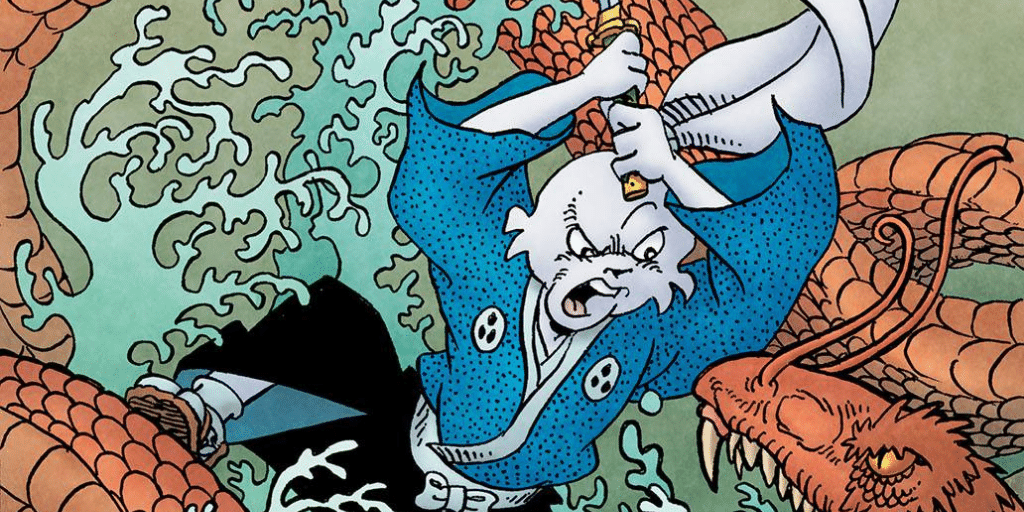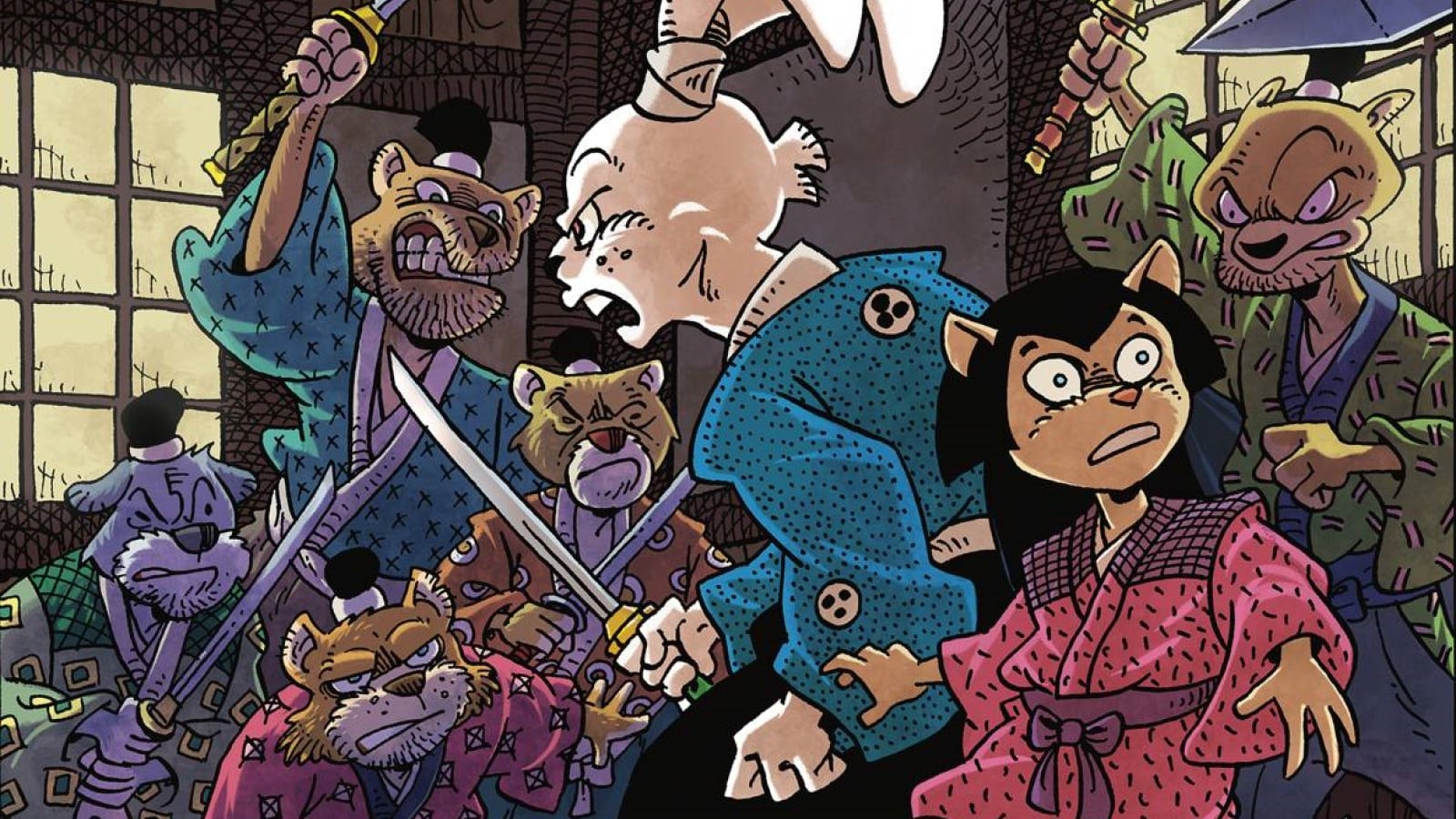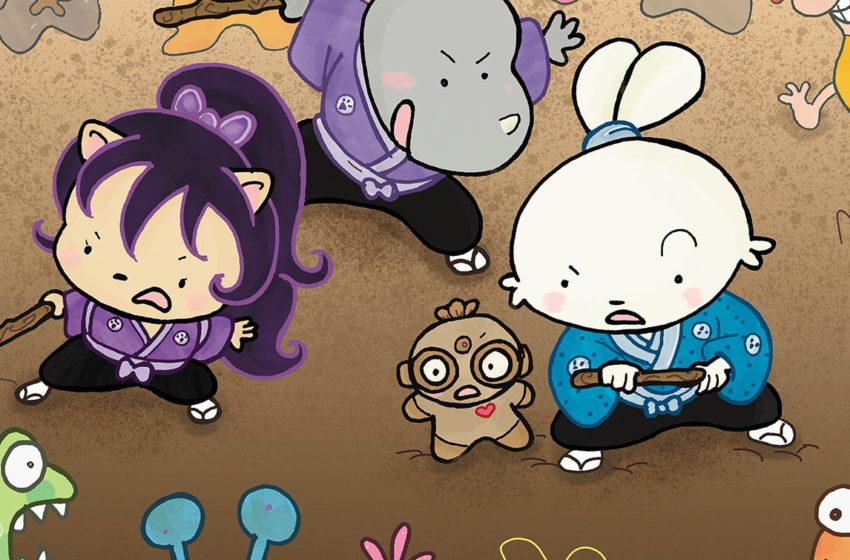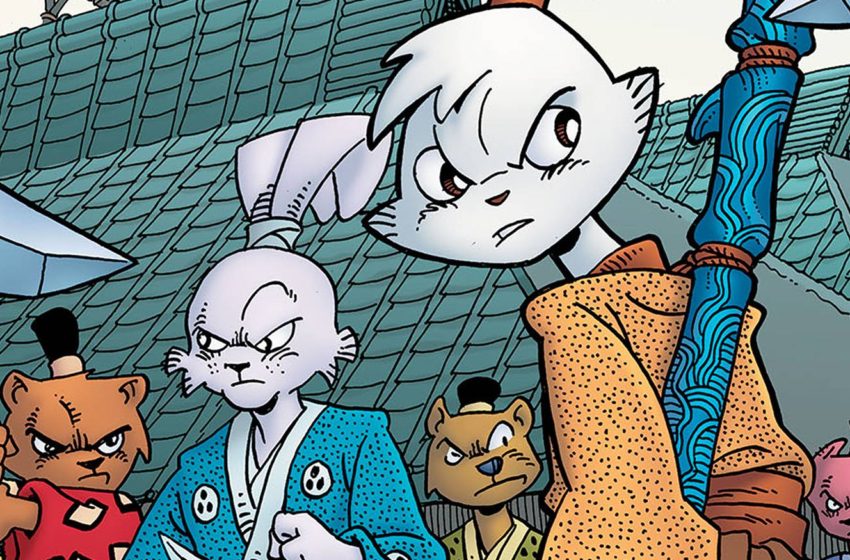What do you say after nearly 40 years? What more can I say about Stan Sakai’s life’s work that hasn’t been said better by others over and over again? I want to be a cynic. If you have read how I cover other books, I tend to be aggressive, nearly bloodthirsty, going after flaws that others might let slide. So why do I struggle to find more to say about Usagi Yojimbo beyond screaming at anyone who isn’t anticipating each new issue with baited breath to catch up on the worst kept secret in comics?
It might be because of the deceptive simplicity with which Sakai weaves things throughout Usagi’s life. Over on Sheldust, Mark Turetsky recently wrote about how Sakai continues to revisit and recolor Usagi’s memories of the battle of Adachigahara. This is the inflection point of Usagi’s life. He goes from an honored retainer of Lord Mifune to a Ronin, a masterless samurai, becoming the wandering yojimbo we know. In Usagi Yojimbo #19, “The Master of Hebishima,” Sakai adds another moment to that event, dancing through the raindrops of continuity in a way that feels important.
At Adachigahara, Usagi received his iconic scar, an outward symbol of the transformation his world underwent that day. However, Sakai reminds us that, while Usagi is our hero, a world’s worth of people were transformed when Lord Hikiji claimed victory. It’s a trick Sakai has pulled before, even recently in the events of the “Homecoming” arc, but one that continues to work here. Unlike finding out that someone else was involved with the murder of Uncle Ben, or the destruction of Krypton, or any number of retcons comics fans have come to hate, learning the history of The Master of Hebishima is additive. Adachigahara was not just a moment where Usagi’s life was upended, it was the moment Japan herself was changed. It led to the Shogun’s peace. Thousands of men were broken, hundreds of families shattered. The course of history was changed when Lord Mifune fell.
When Sakai introduces characters, they become part of a web, with Adachigahara at the center. It may be tangled and messy, more like a chaotic snake pit than a precise web, but it doesn’t matter because all roads lead back to the same bloodsoaked plain. Maybe that’s why here it still feels accessible. You don’t need to know about Toda or Gunichi or the Goblin to know why Adachigahara is important to The Master of Hebishima. You don’t need to have read “Grasscutter” or “The Wanderer’s Road” to know the power of the Kami. Sakai gives new readers everything they need, while rewarding longtime fans with a new angle on iconic events.
Usagi Yojimbo #19 is plotted like many, many stories we have read in the past. Usagi meets some common folk, finds a mysterious stranger, proves his strength in combat. For most writers, this would feel like a repetitive crutch. But Sakai has constructed things in a way where it works. Usagi Yojimbo isn’t structured like a comic, with detailed continuity that requires an official handbook to understand.
Instead, he writes it as a folk tale.
Maybe that’s why it’s so hard for me to be critical of this book. Yes, the cartooning is impeccable. Yes, the lettering puts others to shame. But the strength comes from an elemental center to the tales. They all have the same beginning, they all start at Adachigahara, but from that point on, nothing else matters. You may think of him as a wandering sellsword, or an inquisitive detective, as a romantic or one who has put that behind him. You may think of Gen or Ishida, or Tomoe as his companion. But that just comes down to what story you choose to remember. We’ve been given 37 years of this perfect folk hero. Maybe it’s hard to criticize because he’s become something larger than his humble comics origins. Maybe it’s because I see Usagi Yojimbo as a legend.
Zachary Jenkins co-hosts the podcast Battle of the Atom and is the former editor-in-chief of ComicsXF. Shocking everyone, he has a full and vibrant life outside all this.






